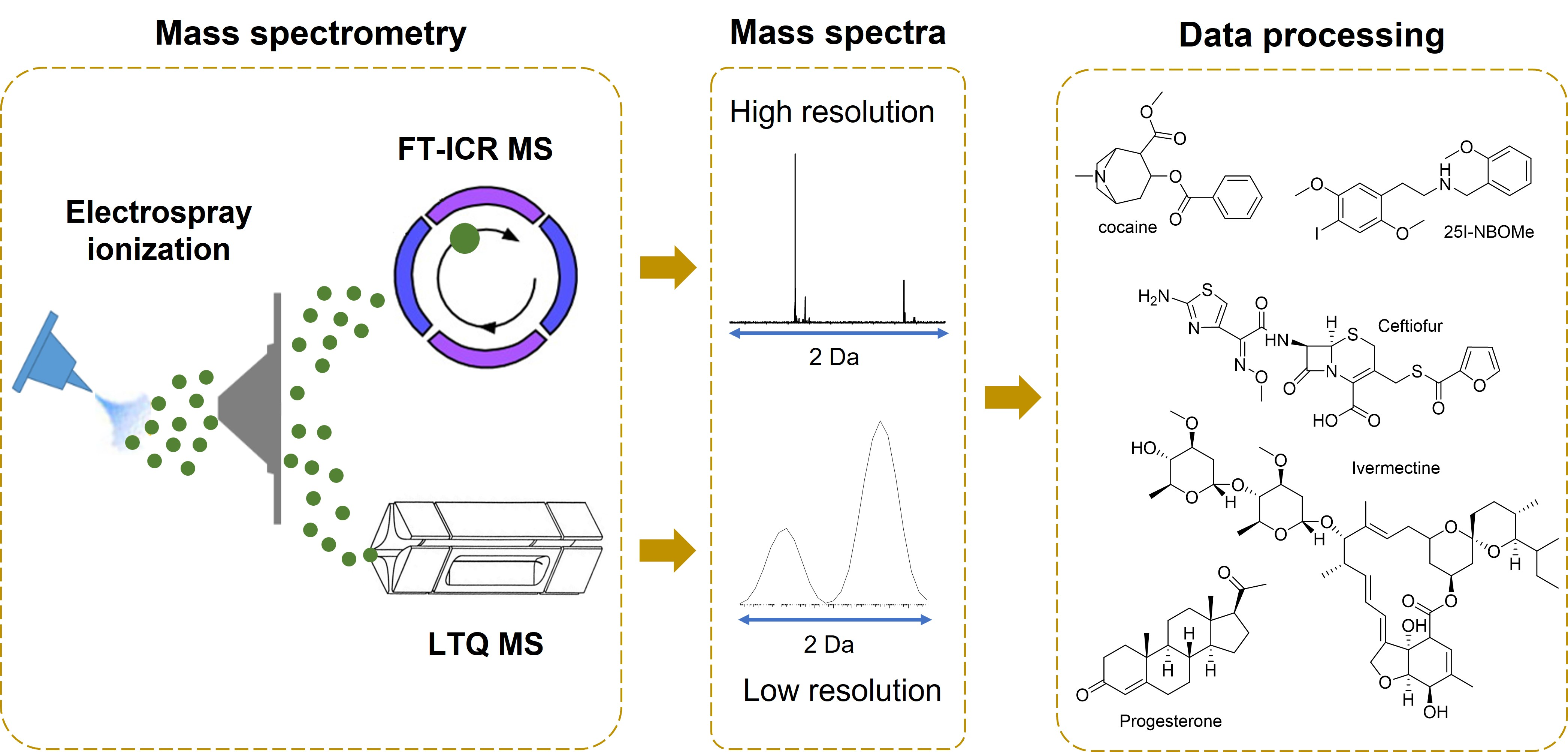SPECTRAL PROFILE OF DRUGS AND DRUGS OF ABUSE OBTAINED BY DIFFERENT MASS ANALYZERS (FT-ICR AND LTQ): AN APPROACH TO THE ELECTROSPRAY IONIZATION SOURCE
DOI:
https://doi.org/10.36524/ric.v9i3.2227Keywords:
espectrometria de massas, ESI( ), FT-ICR MS, LTQ MSAbstract
Mass spectrometry is a technique that can detect, count, and characterize molecules of different compositions. Among the main components of the spectrometers are the ionization sources and mass analyzers, which have specificities of their respective manufacturers. In this sense, this work sought to analyze the spectral profile, based on analyses of pharmaceuticals for human and veterinary use, and drugs of abuse, using the same type of ionization source; electrospray ionization (ESI), positive ionization mode, coupled with Fourier transform ion cyclotron resonance (FT-ICR) and linear ion trap (LTQ) mass analyzers. Eight standards were analyzed: abamectin (C48H72O14); ceftiofur (C19H17N5O7S3); diclofenac potassium (C14H10Cl2NO2K); ivermectin (C48H74O14); lincomycin (C18H34N2O6S); moxidectin (C37H53NO8); progesterone (C21H30O2); estradiol valerate (C23H32O3); and two drug of abuse samples: cocaine (C17H21NO4) and blotter paper (containing 25I-NBOMe (C18H22INO3) and 25C-NBOMe (C18H22ClNO3)). By the data acquired, in most cases, spectra were observed with signs indicating the formation of adducts, [M + Na]+, [M + K]+, protonated molecules [M + H]+ or even dimmers, [2M+H]+, [2M + Na]+, and [2M + K]+. Thus, although the analysis with the ESI(+)FT-ICR MS equipment presents very high resolution and mass precision, the analysis by the ESI(+)LTQ MS equipment provides a fast and efficient analysis of MS/MS experiments, which contributes to confirming the structure of the detected molecule.

Downloads
Published
Issue
Section
License
Copyright (c) 2023 Revista Ifes Ciência

This work is licensed under a Creative Commons Attribution-NonCommercial-NoDerivatives 4.0 International License.
Autores que publicam nesta revista concordam com os seguintes termos:
- Autores mantém os direitos autorais e concedem à revista o direito de primeira publicação, com o trabalho simultaneamente licenciado sob a Licença Creative Commons Attribution que permite o compartilhamento do trabalho com reconhecimento da autoria e publicação inicial nesta revista.
b. Autores têm permissão e são estimulados a publicar e distribuir seu trabalho online (ex.: em repositórios institucionais ou na sua página pessoal) a qualquer ponto antes ou durante o processo editorial, já que isso pode gerar alterações produtivas, bem como aumentar o impacto e a citação do trabalho publicado (Veja O Efeito do Acesso Livre).


